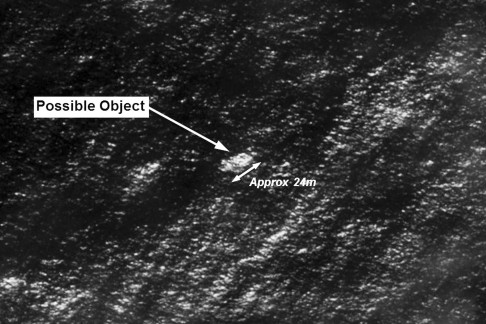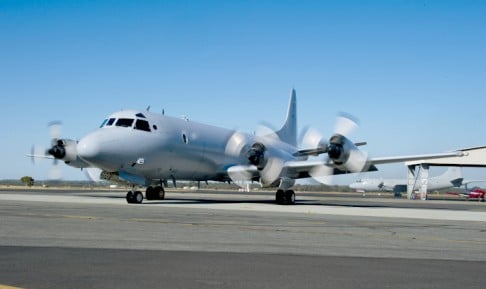Developing | Australia PM defends decision to release information on 'objects' possibly related to missing jet
Australia's Prime Minister Tony Abbott today defended his decision to reveal that authorities had spotted 'objects' in the Indian Ocean that may be related to the disappearance of Malaysia Airlines jet 370, saying he owed it to the families affected.

Australia's Prime Minister Tony Abbott today defended his decision to reveal that authorities had spotted 'objects' in the Indian Ocean that may be related to the disappearance of Malaysia Airlines jet 370, saying he owed it to the families affected.
On being asked whether he had "jumped the gun" over releasing details of the grainy satellite images on Thursday, Abbott said: "We owe it to the families and the friends and the loved ones... to try to resolve what is as yet an extraordinary riddle."
He added: "We owe it to them to do everything we can to resolve this and because of the understandable state of anxiety and apprehension that they're in, we also owe it to them to give them information as soo as it's to hand."
However, speaking during a visit to the Papua New Guinea capital Port Moresby, he acknowledged one of the objects spotted "could just be a container that’s fallen off a ship. We just don’t know".
He said that additional information from Australian authorities, who are leading the southern end of the search, would be made available as soon as possible
Abbott spoke as the hunt for the missing jet more than 2,260 kilometres off the west coast of Australia, in one of the world's most remote locations, continued into its second day.
The search has been hampered by poor weather conditions and the fact that spotter planes only have enough fuel to remain in the area for a couple of hours before they are forced to turn back.
Watch: Australia launches search after objects related to MH370 spotted
The satellite images, which could show debris from the missing Boeing 777 floating in the Indian Ocean, are the first "credible" leads in the investigation, officials said yesterday.
The "possible objects" - as they were described by the Australian government - were spotted off the coast of Perth, thousands of nautical miles south of where the plane was last seen.
Australian authorities said in a statement early on Friday that the first of five aircraft - a Royal Australian Air Force P3 Orion - had left a base in Western Australia at around dawn to resume the search.
A civilian Gulfstream jet and a second Orion were expected to depart later on Friday morning and a third Orion was due to fly out in the early afternoon to scour more than 35,000 square kilometres of ocean. A U.S. Navy P-8 Poseidon aircraft was scheduled to leave the base at about 4pm.
"It is a very long journey to the site and unfortunately aircraft can only have one or two hours over the search area before they need to return to the mainland for fuel,” said Warren Truss, who is currently Australia’s acting prime minister while Tony Abbott is overseas.
"Clearly this is a very, very difficult and challenging search. Weather conditions are not particularly good and risk that they may deteriorate,” he added.
Truss said officials were working to get more satellite images and stronger resolution to help search teams get a better sense of where the objects may be and how far they may have shifted since the initial images were captured.
“They will have moved because of tides and wind and the like, so the search area is quite broad,” he said.

China said today it was sending three warships and am icebreaker to join the search, but gave no indication as to when they might arrive.
Meanwhile three Chinese military planes left the southern city of Sanya and headed to Malaysia to help, Xinhua news agency reported.
The Norwegian cargo vessel Hoegh St. Petersburg, with a Filipino crew of 20, arrived in the area yesterday and used searchlights after dark to continue the hunt for debris. It will continue the search today, said Ingar Skiaker of Hoegh Autoliners, speaking to reporters in Oslo.
The Norwegian ship, which transports cars, was on its way from South Africa to Australia, he said. The Australian Maritime Safety Authority said another commercial ship and an Australian navy vessel were also en route to the search area.
Late last night, Canberra called off the air search due to thick cloud, saying no debris had been found.
The leads come almost two weeks after flight MH370 vanished from radar screens over the South China Sea on March 8.
Since then, relatives of the 239 people on board the Boeing 777 - 154 of them Chinese - have remained in the dark over the fate of their loved ones.

But even if the "objects" in the satellite photos are found - and if they turn out to be debris from the aircraft - it could be months, or even years, before the mystery of MH370 was solved, said Malaysian acting transport minister Hishammuddin Hussein.
At yesterday's daily press conference in Kuala Lumpur, he said: "The next step will be to find the black box. Sonar technology and other assets will have to be deployed in that effort."
The photographs released of the two "possible objects" are dated March 16, but Malaysian officials have not verified the exact date on which they were taken. This raises questions over how far they may have moved due to ocean currents and wind.
"Deep-sea searches and surveillance are things we are already looking into," Hishammuddin said.
The search also continued in the so-called "northern corridor" identified a few days ago, despite the possible breakthrough.
But the Chinese foreign ministry last night said analysis of radar and satellite data had confirmed the flight did not enter the Chinese territory that forms part of the northern corridor.
About 18 ships and 31 aircraft from countries including China, Indonesia and Malaysia are continuing to search along the projected flight path across the southern Indian Ocean.
